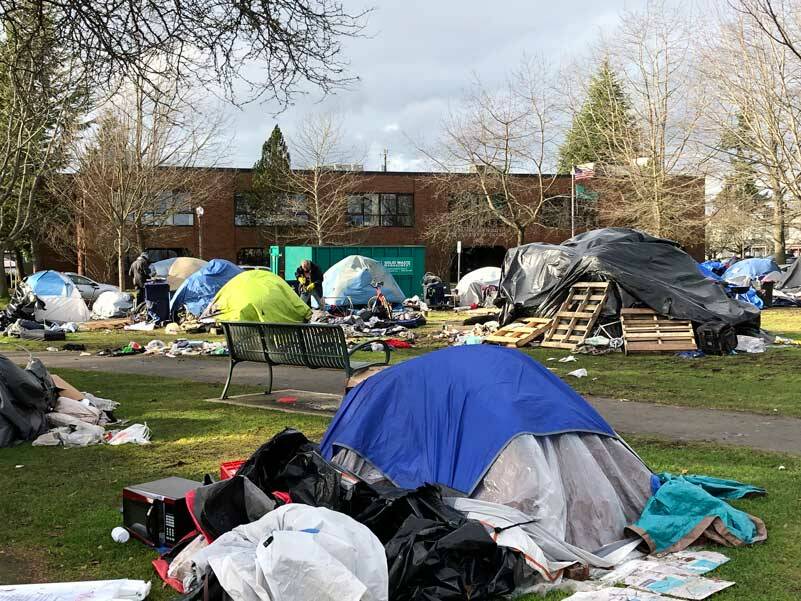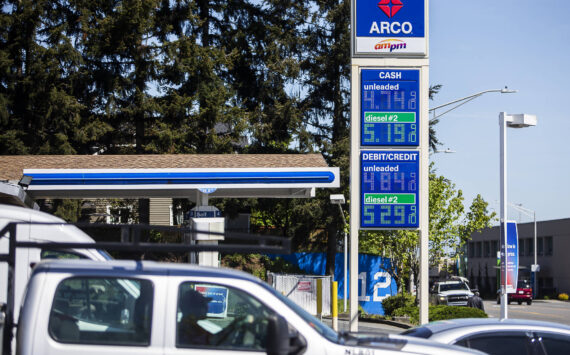By Morf Morford
Tacoma Daily Index
I’m not a realtor and I don’t have a professional background in urban planning so I might be missing something, but it seems to me that there is something fundamentally amiss about how most of us are thinking about our twin – and continually increasing housing problems; the cost of housing and the ever-expanding number of those without housing.
The (well-paid) experts and developers among us have a simple explanation – if we build more housing, more people will occupy that housing and we will create more jobs, boost the local economy and, as they would say it, everybody wins.
There’s only one problem.
And any one of us could see it – if we didn’t have that story and a few dollar signs blocking our view.
You don’t need to be a sociologist to see that with each new development, each new block of housing, that there are more, not less, homeless on our streets.
And you don’t need to be a real estate broker to see that with each new housing project, prices go up – not down.
In other words, prices go up, there’s more homeless, and, what I consider even worse, inequity between neighborhoods is increased.
In many of these housing units, a very strange thing is happening – they sell almost immediately, often before they are constructed. And many times by buyers who never see them.
And they are not always occupied.
I have a friend who lives in one of the units at Pt. Ruston. He tells me that every unit sold almost immediately.
But almost no one lives there.
Dusty cars may be in the parking areas, but the rooms and hallways are empty.
Those million dollar-plus units are sold, but not occupied.
Some are investments, some are summer or guest homes.
How many homeless are taken off the streets with the construction of more than a thousand units at Pt. Ruston?
We all know that the answer is somewhere around zero.
In fact I would argue that all of the “high end” new housing in the Stadium District or North End has about the same impact on housing the homeless city-wide; somewhere near zero.
In fact I would argue that the more “high-end” housing that is built, the more “low-end” housing is demolished and those long term (and usually low-income, disabled or retired residents (many of them veterans) are displaced – often directly to our streets.
NOT family sized
Consider the recently built housing in the Proctor neighborhood; they are mostly high end, and the newest development, currently under construction, is mostly small units – one bedroom or studio apartments.
In fact the sizes will range from 273-681 square feet and priced between $1,300-$2,000 per month, according to the builder.
The 95 units will also feature a fitness center, pet spa, electric vehicle charging stations and storage/parking for up to 95 bikes.
In other words, they are specifically designed NOT for families.
And they are certainly no one’s idea of a permanent home.
To no one’s surprise, as more of these units are built, prices go up and the number of homeless goes up.
What did I miss here?
And, as I mentioned, highly visible inequity between neighborhoods is increased.
When development is focused on one neighborhood, it is, almost by necessity, neglected in others.
It seems obvious to me that if we want our entire community to be healthy, we need to increase housing where it is needed – not where it might be most profitable.
Breathtaking vistas. Stylish interiors. Vibrant living. – From a Tacoma real estate brochure
If you want larger, dirtier and more dangerous homeless “camps”, and more of them, yes, increase high end housing to highlight the disparity between the homeless and the “luxury town homes” our developers and local politicians seem to want to keep building.
“More housing” they say, as if it were a math problem.
It is not a math problem.
Housing is being built where it is not needed – and often not wanted.
Long-term (and affordable) housing is often torn down to make room for these glistening towers that stand largely empty – but sold.
What if we actually built housing where people wanted it – and on an economic model they could afford?
Tiny expensive units are not the answer.
Most new units are one or two bedroom units – at best.
Very few are designed for larger (or growing) families.
And even fewer are intended for long term occupancy.
Could people retire in those places?
Or stay there with heath issues? Or if they were unemployed? Or had even the slightest glitch in their finances or relationships?
Or where would they go if, as we have seen in Florida recently, the building itself has construction or maintenance problems?
Condos, as we have seen in Florida and other places, have a life-span of abut 40 years.
From what I have seen up close at some of the units recently built in Tacoma, I would not expect many of them to last much longer than that.
Other than money to be made (for now), what is the point of building so many units that won’t last long, increase homelessness and raise prices (or home equity for those already established) in the surrounding neighborhoods?
Politicians and developers keep cheering “more housing, more housing” as if it was a math problem.
It never was. And treating housing like a math problem won’t get us anywhere, except further down a way none of us want to go.
There’s a philosophical premise that a properly asked question holds its own answer.
When it comes to housing (among other issues, from drug laws to education and health care) I am convinced that we have been asking the wrong questions – and can only get unsatisfying if not frustrating answers.
Instead of “more” money and housing – how about permanent, attractive, appealing and appropriate housing that people (and neighborhoods) actually want – and will take care of – and all of us, in every neighborhood will welcome and be proud of?
Oddly enough, the move toward housing in Tacoma, as we have seen it lately, makes multiple issues far worse; our mayor has articulated a vision of an “anti-racist” community – price defined housing, however unintentionally, even without historic racially defined “covenants” imply and enforce unwritten segregation in their own way.
Tacoma’s much heralded emphasis on increasing the tree canopy is cancelled out by tall and sun-blocking buildings.
If you want a visual sense of the disparity of Tacoma neighborhoods, just look at where the homeless camps are, where the tree canopy is and where the high end housing investment seems to grow every day.
I love Point Ruston. In many ways it is the best of what Tacoma could be one day.
But when it comes to tree canopy, affordable housing or racially welcoming or diversity of community, it is not a realistic reflection of what Tacoma has been or what it is becoming.
I look forward to the day when every neighborhood in Tacoma is welcoming to anyone who wants to live there and every neighborhood is desirable and worthy of investment.





